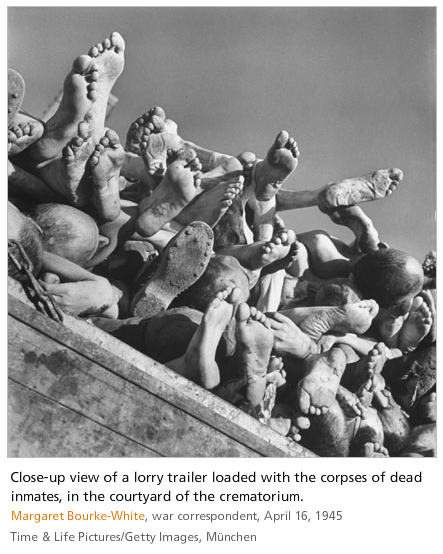Forced tours of camps
![]()
![]() [Germans
(including children) forced to look at dead bodies in camps, mostly Buchenwald
where they had to walk 4 miles. The question here is why didn't the
Russians open Auschwitz for the word to see the alleged horrors of the 'gas
chambers'? In Buchenwald there didn't seem to be that many bodies around,
just some stacked up for the crematorium that they put on a trailer.]
[Germans
(including children) forced to look at dead bodies in camps, mostly Buchenwald
where they had to walk 4 miles. The question here is why didn't the
Russians open Auschwitz for the word to see the alleged horrors of the 'gas
chambers'? In Buchenwald there didn't seem to be that many bodies around,
just some stacked up for the crematorium that they put on a trailer.]

|
10 June. German civilians listen to their
Burgomeister, Karl Schmidt, a former inmate of
Buchenwald camp, as he speaks at the graves of 56
prisoners of Buchenwald who were executed by their
Nazi guards when they fell out on a march of 1.400
men east from Buchenwald to escape the advancing
Americans. The civilians of the town of Saalberg,
Germany, were forced to give the bodies a decent
burial in a central section of the town.
|

17 May 1945. German women of Namering ordered by
Military Government with Third Army to view bodies of 800 murdered Russians,
Czechs and French who were inmates of Flossenberg prison camp. Bodies were
exhumed by townspeople of Namering from stream bank and reburied.

|
Men at left are Nazi soldiers freed from P.w.
Enclosure and ordered to stand at attention for 30
minutes when they walked at viewing.
|

|
17 May. The sign reads: "Here lie 800 murdered
bodies killed by the Nazis of Namering, Germany in
april 1945". German civilians of town read sign
during visit to see bodies of exhumed victims on
order of Military Government of U.S. Third Army.
|

|
17 May. German men and women of Namering dig new
graves for the bodies of 800 murdered Russians,
Czechs and French whose bodies were found near
stream bank outside town. Nazis are charged with the
mass murder of the victims, former inmates in the
Flossenberg concentration camp.
http://www.buchenwald.de
|


|
17 May. German lad among children ordered by U.S.
Military Government with Third Army to view bodies
of 800 murdered Russians, Czechs and French who were
inmates of Flossenberg concentration camp. Bodies
were exhumed by townspeople of Nasmering from stream
bank and reburied.
|

|
17 May. German child with women gazes at body of one
of the 800 murdered Russians, Poles and Czechs whose
bodies were exhumed near Namering on order of
Military Government of U.S. Third Army. Victims were
formerly held in Flossenberg concentration camp.
|
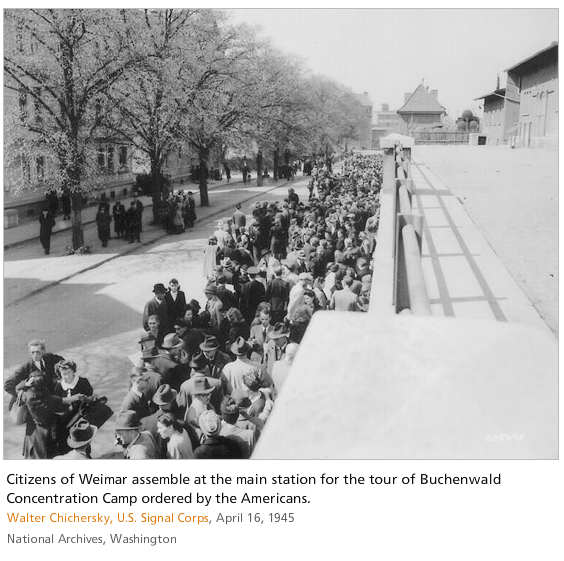
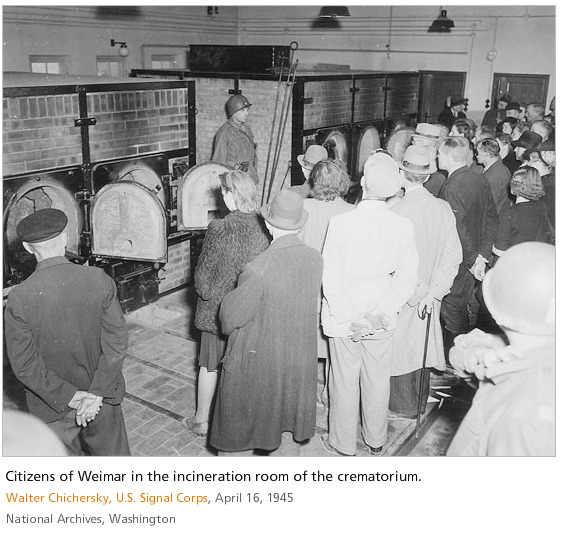
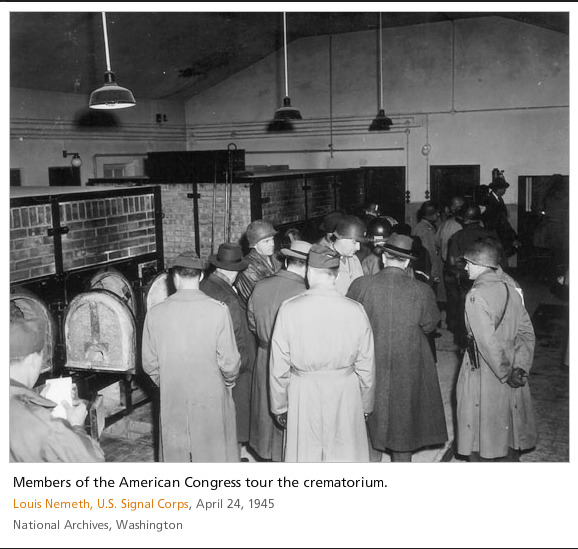
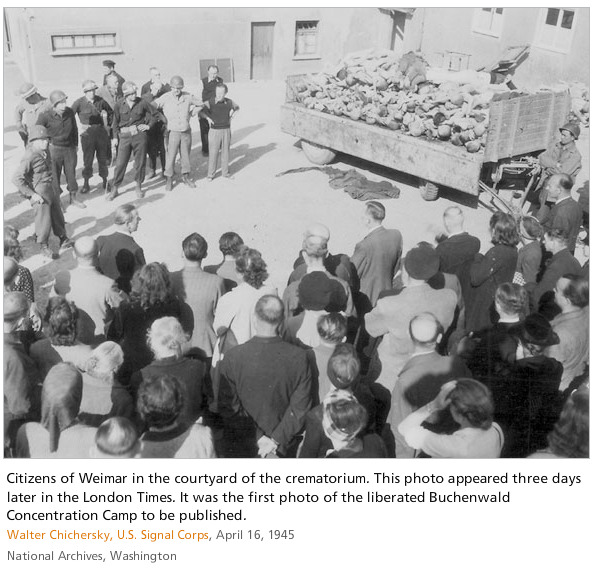
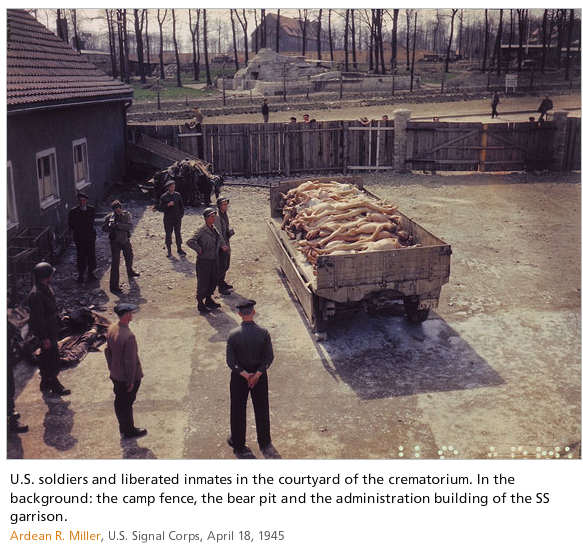
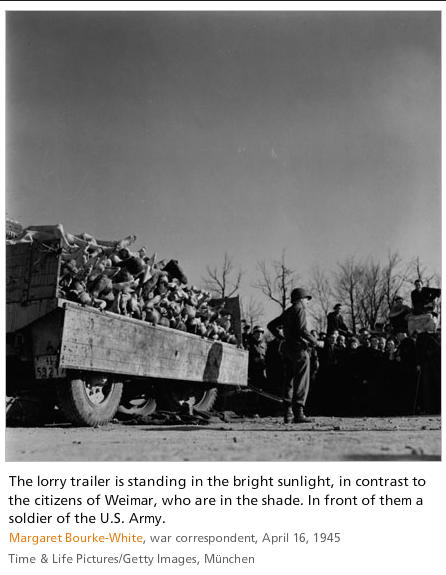
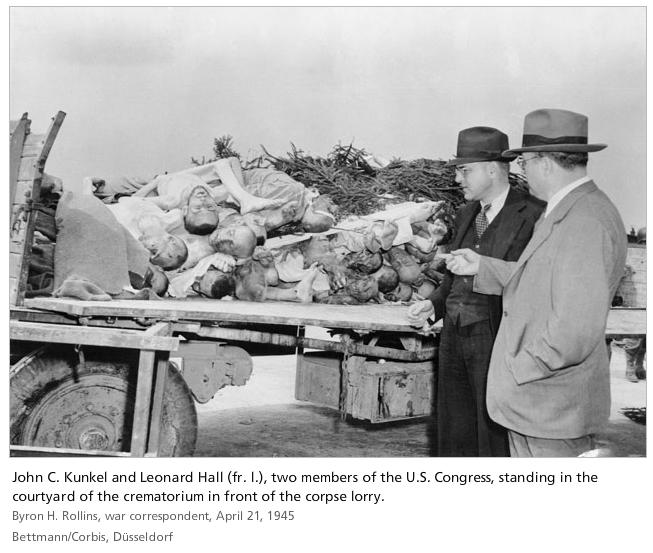

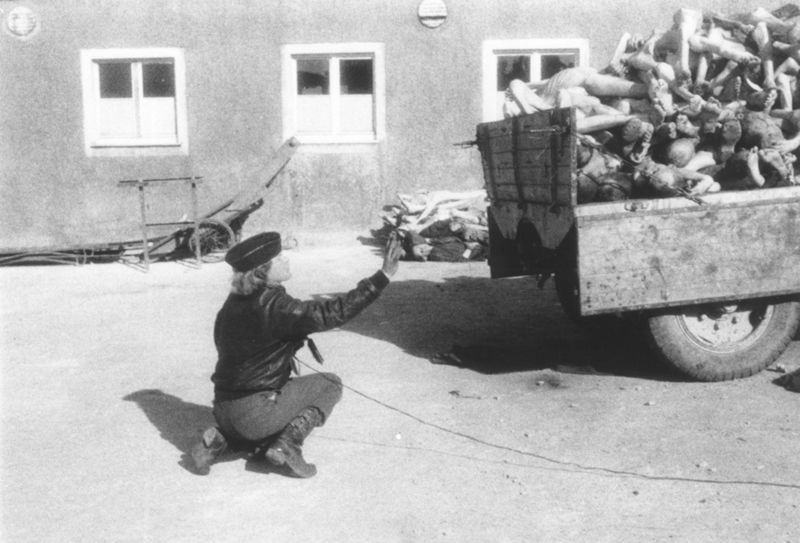
Life magazine photographer Margaret Bourke-White
prepares to take a photograph of a wagon piled with corpses in the newly
liberated Buchenwald concentration camp.
Lieutenant Colonel Parke O. Yingst was born in Hummelstown, PA in 1908. In
1930 he graduated from the Colorado School of Mines and joined the Army Corps of
Engineers as a reservist. He subsequently went to work in Venezuela. During this
period, his reserve commission expired. After returning to the United States in
1940, Yingst applied for recommissioning so that he could join the fight against
Hitler. In 1942 he was ordered to active duty as a First Lieutenant in the Army
Corps of Engineers. On April 4, 1944 he was promoted to Major, and in July, he
assumed command of the 281st Engineer Combat Battalion. In April 1945 Yingst was
present at the liberation of the Ohrdruf and Buchenwald concentration camps. He
was eventually promoted to Lieutenant Colonel prior to his separation from the
army for medical reasons.
Photographed by Colonel Parke O. Yingst. Buchenwald, [Thuringia] Germany,
April 1945.
United States Holocaust Memorial Museum.

Bodies piled up outside the crematorium
